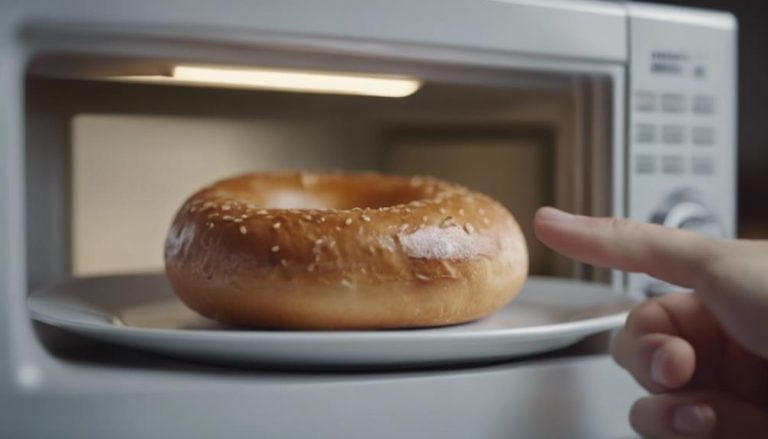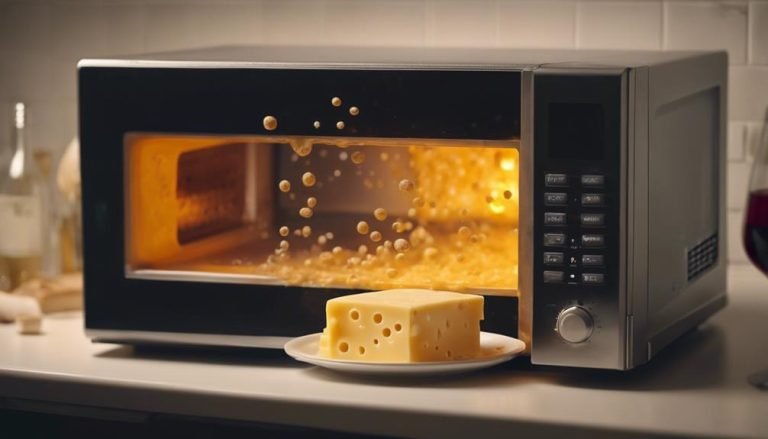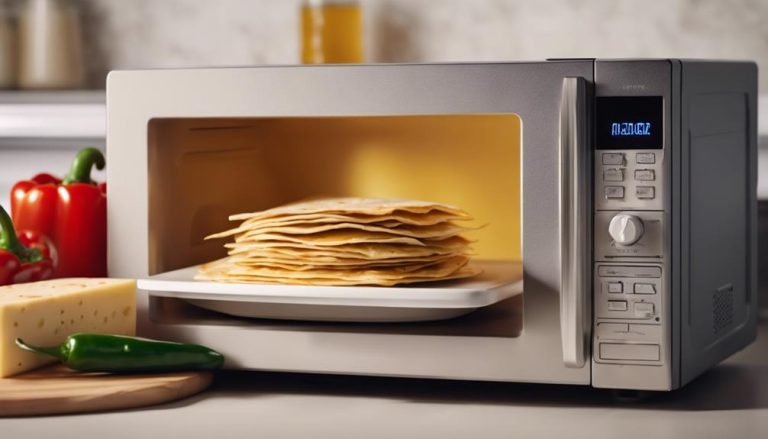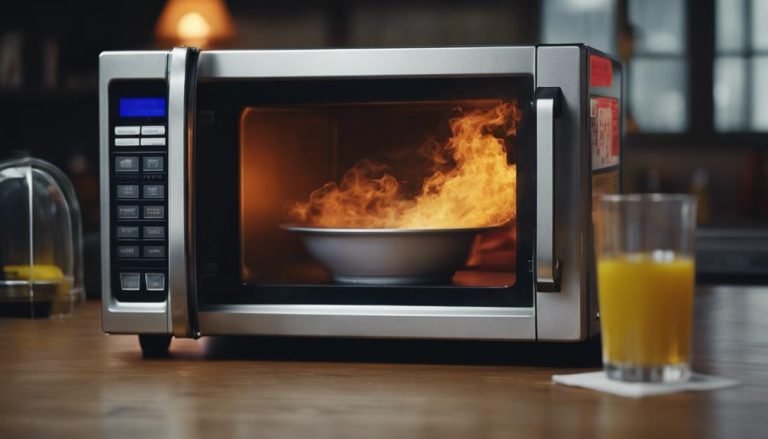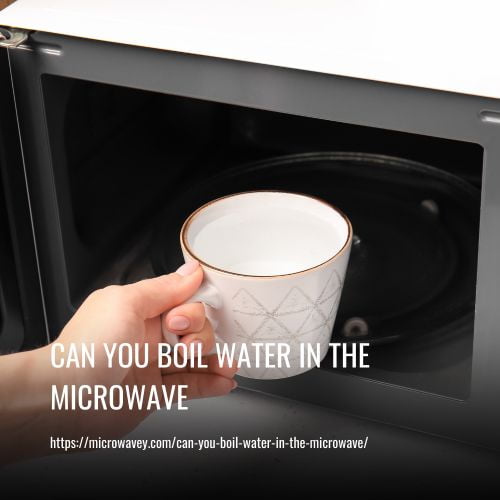Can You Microwave a Water Bottle
Yes, you can microwave a water bottle, but it is important to use caution and adhere to certain guidelines.
First, ensure that the water bottle is labeled as microwave-safe. Not all materials are suitable for microwave use, so it is crucial to check the bottle's packaging or consult the manufacturer's guidelines.
Additionally, it is important to remove any metal components, such as bottle caps or lids, as they can cause sparks or fires in the microwave.
When microwaving a water bottle, make sure to only heat water and avoid microwaving any other substances, as this can lead to potential chemical reactions or explosions.
Finally, handle the hot water bottle with care, as it may become extremely hot and cause burns.
Overall, microwaving a water bottle can be done safely, as long as proper precautions are taken.
Key Takeaways
- Silicone water bottles are microwave-safe due to their heat-resistant properties.
- PVC and rubber bottles can release toxins when microwaved.
- Stainless steel bottles should not be microwaved.
- To ensure safety, always check the bottle's material for microwave suitability.
Safety of Microwaving Water Bottles
When considering the safety of microwaving water bottles, it is crucial to understand the materials and composition of the bottle to prevent potential hazards. Water bottles made of silicone are generally suitable for microwave use due to their heat resistance and absence of harmful chemicals.
However, microwaving rubber or PVC water bottles can result in damage, melting, and the potential release of toxins such as BPA.
On the other hand, stainless steel water bottles like Hydro Flasks and Yeti Cups are not microwave-safe, as they can cause sparks, damage, and even melt plastic components.
To ensure safety, it is advisable to avoid microwaving water bottles if unsure of their material or microwave suitability, opting for alternative heating methods like using warm water from a kettle when necessary.
Types of Microwave-Safe Water Bottles
Silicone hot water bottles are a reliable choice for microwave-safe heating due to their high heat resistance and absence of harmful chemicals like BPA. These water bottles, typically made of food-grade silicone, can withstand high temperatures without melting or releasing toxins, making them a safe option for heating in the microwave.
They heat up relatively quickly, usually in about 3 minutes, providing a convenient and efficient way to warm water. Additionally, silicone hot water bottles are known for being free from BPA, adding to their safety profile.
To ensure the water bottle is suitable for microwave use, it's advisable to check the bottle or packaging instructions for specific guidelines before heating to avoid any potential risks.
Risks of Microwaving Water Bottles
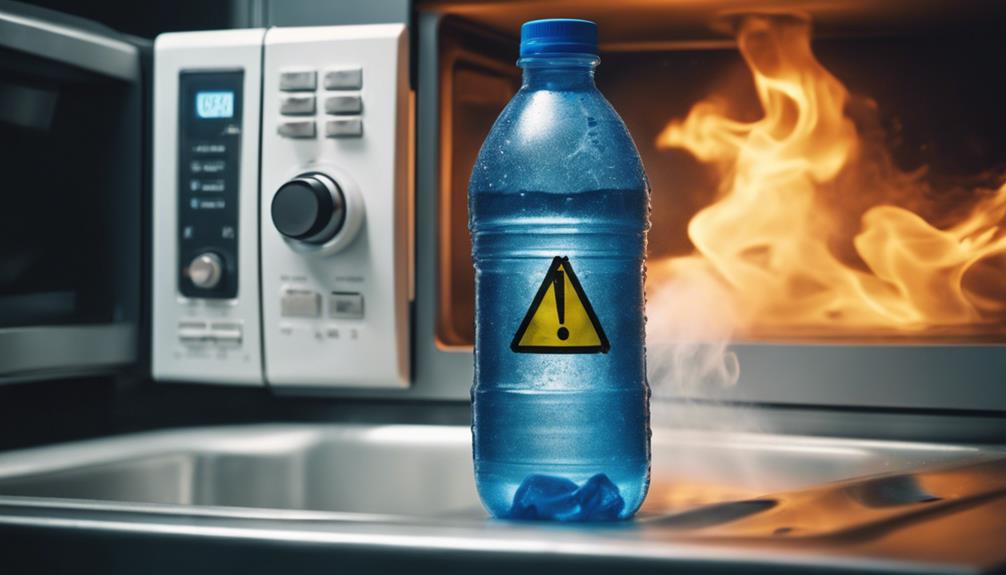
Microwaving water bottles that are not designated as microwave-safe can pose serious risks. This includes the potential for melting, release of toxins, and safety hazards. Heating hot water bottles made of rubber or PVC in the microwave can lead to melting and the release of harmful chemicals like BPA, presenting health risks. Silicone hot water bottles are generally safe for microwave use as they can endure heat without melting or emitting toxins.
Additionally, microwaving stainless steel water bottles, such as Hydro Flasks or Yeti Cups, can be dangerous. This action may cause sparks, damage, and even melt plastic components. It is crucial to avoid microwaving water bottles unless they are explicitly labeled as microwave-safe to prevent accidents and maintain safety standards.
BPA Concerns With Microwaving
Exposure to harmful additives like Bisphenol A (BPA) and phthalates can occur when plastic water bottles are microwaved, potentially leading to disruptions in hormonal balance. When considering microwaving water bottles, it's essential to be aware of the risks associated with BPA exposure. Here are some key points to consider:
- BPA Release: Microwaving plastic water bottles can lead to the release of BPA and phthalates into the water.
- Hormonal Disruption: BPA, commonly found in polycarbonate plastics, has the potential to disrupt hormonal balance when leached into beverages.
- Chemical Exposure: Even BPA-free plastics may still contain chemicals that can disrupt hormones, especially when exposed to microwave heat.
- Preventative Measures: To minimize exposure to BPA and phthalates, consider using alternative materials like glass or stainless steel for heating water in the microwave.
Plastic Melting in the Microwave
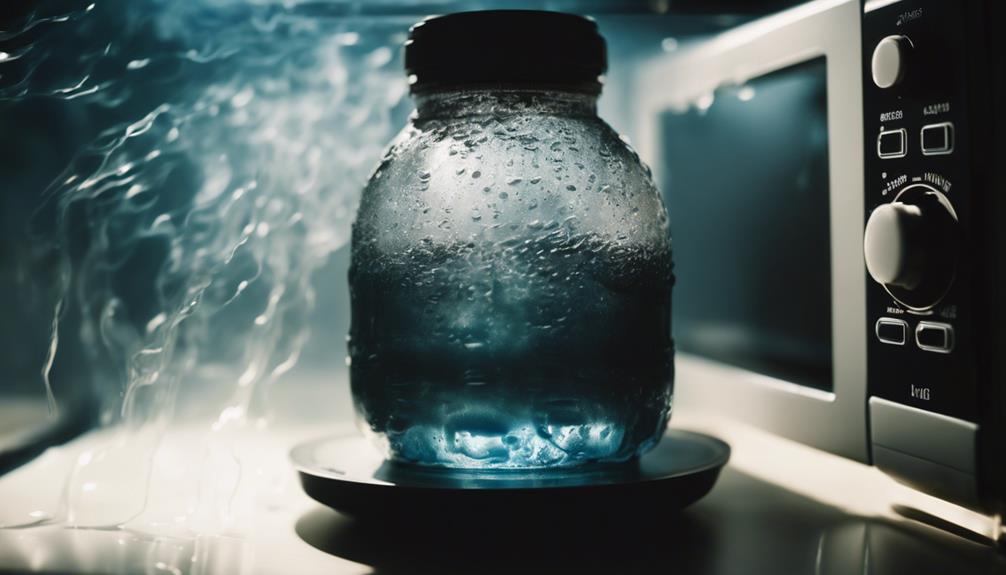
When heating certain rubber or PVC hot water bottles in the microwave, there is a risk of the plastic melting and releasing toxins, posing both health hazards and potential damage to the microwave. It is essential to understand the materials your hot water bottle is made of and whether they are safe for microwave use. To help you make informed decisions, here is a table highlighting the types of containers made of different materials and whether they are microwave-safe:
| Container Material | Microwave Safe? | Risk of Melting |
|---|---|---|
| Rubber | No | High |
| PVC | No | High |
| Silicone | Yes | Low |
To avoid the risk of plastic melting in the microwave, it is best to avoid microwaving rubber or PVC hot water bottles and opt for safer alternatives like silicone bottles.
Alternative Ways to Heat Water Bottles
For those seeking alternative methods of heating water bottles safely and efficiently, exploring non-microwave options can provide additional choices for warming these items. When considering alternative ways to heat water bottles, here are some options to explore:
- Vacuum Insulated Flasks: Utilize vacuum insulated flasks to keep water hot for extended periods, providing a convenient and safe way to warm up the bottle.
- Electric Kettles: Electric kettles offer a quick and efficient method to heat water, ensuring the water reaches a suitable temperature without the need for a microwave.
- Warm Water Baths: Submerge the water bottle in warm water to gradually heat it up, avoiding sudden temperature changes that could damage the bottle.
- BPA-Free Materials: Opt for hot water bottles made of BPA-free materials to ensure safety when heating the bottle using alternative methods.
Using Kettle-Warmed Water Instead
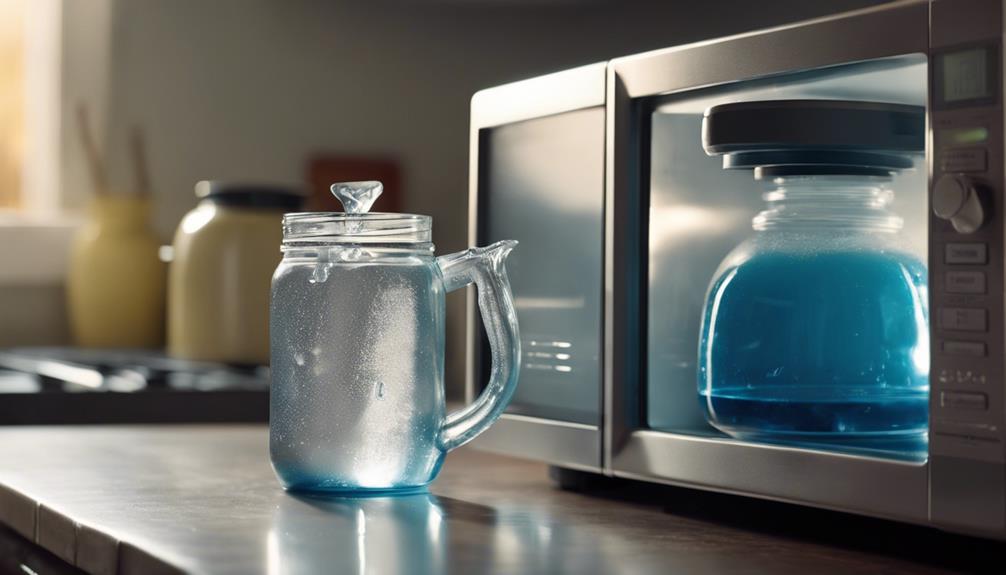
Using kettle-warmed water as an alternative method for heating water bottles offers a safer and more controlled approach compared to microwaving. Pouring warm water from a kettle helps prevent damage to the bottle by avoiding extreme temperatures that could weaken the material. It is recommended to wait 5-10 minutes for the water to cool slightly before filling the bottle to prevent any potential leaks or injuries. Opting for kettle-warmed water maintains the integrity of the water bottle and reduces safety risks associated with microwaving. The table below highlights the benefits of using kettle-warmed water over microwaving:
| Benefits of Using Kettle-Warmed Water |
|---|
| Safer heating method |
| Prevents damage to the bottle |
| Reduces safety risks |
| Allows for controlled heating |
| Maintains the bottle's integrity |
Frequently Asked Questions
Can Microwaving a Water Bottle Affect the Taste of the Water Inside?
Microwaving a water bottle can impact taste due to potential chemical interactions between bottle materials and water. Safety concerns arise from leaching of harmful substances, risking health hazards. Opt for microwave-safe bottles to preserve water flavor when heating.
Are There Any Health Risks Associated With Using a Microwave to Heat up a Water Bottle?
Heating water bottles in a microwave may lead to plastic leaching, posing health risks due to potential chemical release. Safety concerns arise from improper heating methods, emphasizing the importance of choosing microwave-safe materials to minimize health hazards associated with heating water bottles.
Can Microwaving a Water Bottle Cause the Bottle to Explode or Burst?
Microwaving a water bottle can lead to pressure build-up, increasing the risk of explosion or rupture. Using microwave-safe materials and following safety precautions can mitigate these dangers. It is crucial to avoid microwaving non-microwave-safe water bottles to prevent accidents and environmental impact.
Is It Safe to Reuse a Plastic Water Bottle for Microwaving Multiple Times?
Reusing a plastic water bottle for microwaving multiple times may pose health risks due to chemical leaching. Ensure plastic safety by opting for BPA-free containers with recycling number 5. Prioritize sustainability by replacing worn bottles to minimize environmental impact.
How Long Should a Water Bottle Be Microwaved for It to Reach a Safe Temperature for Use?
Heating time is critical in microwaving water bottles safely. To reach a suitable temperature for use, it's recommended to microwave for 2-3 minutes. However, wattage and bottle material should be considered. Safety precautions are vital to prevent damage or injury.
Conclusion
In conclusion, it is crucial to exercise caution when considering microwaving water bottles due to safety risks and potential damage.
While some water bottles made of specific materials may be suitable for the microwave, it is advisable to refer to the manufacturer's guidelines.
When in doubt, it is better to err on the side of caution and explore alternative methods for heating water bottles. Remember, it's always better to be safe than sorry.

